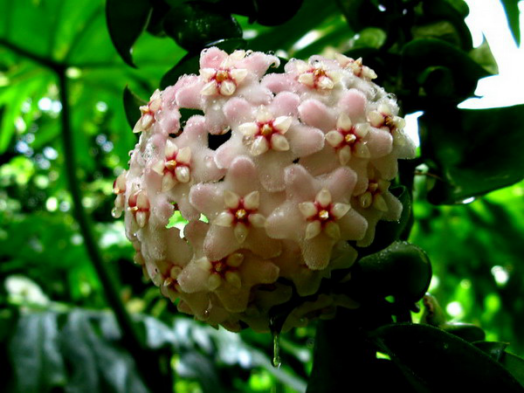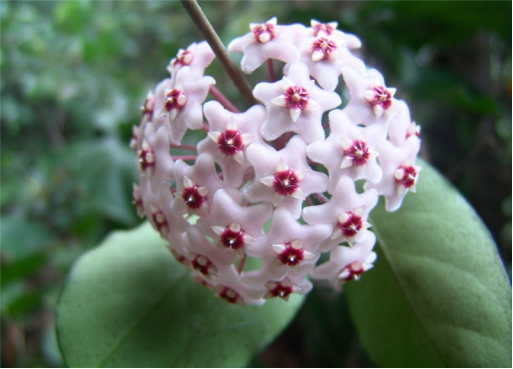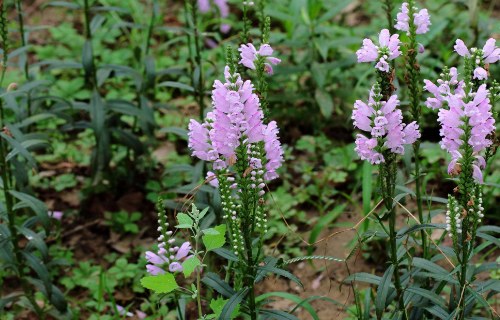The mode of reproduction of Cymbidium:
Cutting method, strip pressing method and sowing method. Cutting propagation is the most commonly used, followed by sowing propagation.
If you want to appreciate the beauty of ball orchid earlier, go to the flower market to choose a pot, the editor also inquired about its price in advance: the ball orchid has been planted and growing well, the price of each pot is between 20rel and 60.

Ball orchid non-toxic, you can rest assured to breed! Would you choose to plant a pot yourself or go to the flower market and buy a pot?
Propagation and cultivation techniques of Cymbidium
Heart leaf ball orchid originated from Thailand and Laos, like warm, humid semi-shady environment, drought resistance, avoid stagnant water, not cold-resistant. Enter the growing period from April to October every year, when the heart bulb orchid is placed in a bright light without direct sunlight for maintenance, to avoid hot sun exposure, in order to prevent burning leaves. However, too much shade will result in overgrowth of plants, thin leaves and long stem nodes. Today, I would like to briefly introduce the reproduction and cultivation techniques of Cymbidium.
The Propagation Mode of Cymbidium
The propagation of Cymbidium is mainly by cutting. healthy and full rattan stems are selected in the growing season, and 3 sections are cut. Pay attention to remove the white serous from the wound and let it dry for about 2 days. after the wound is dried, it is inserted into a medium with less fertility, such as vermiculite, red jade soil or sand.
Put it in a bright place, pay attention to keep the medium moist, it is easy to take root. Leaf cuttings can also be cut, although they can take root, but it is difficult to sprout and form plants. It can also be propagated by pressing, tissue culture, sowing and other methods, and the latter two methods are more suitable for large-scale reproduction.
Cultivation techniques of Cymbidium
Heart leaf ball orchid watering should be mastered, "do not dry do not water, water is thoroughly", but do not accumulate water, so as not to cause rotten roots. Also can not be long-term drought, otherwise the leaves become thinner, lack of vitality. Should often spray water to the heart leaf ball orchid, increase the air humidity, make the leaf thick, plump, and clean the leaf surface dust.
Apply mature organic liquid fertilizer or compound fertilizer once a month, the fertilizer liquid should be light rather than concentrated. Pay attention to ventilation during high temperature in summer to avoid muggy environment. Put it in a sunny place indoors in winter, control watering, make the plant sleep, and can withstand the low temperature of about 5 ℃. The basin needs to be changed every 1-2 years in spring.
When changing pots, cut off the rotten roots and plant them with newly cultivated soil. The cultivated soil is required to be loose, breathable, fertile, well drained and has a certain particle size. As Cymbidium is a vine, a support should be set up for its climbing and growth. Can also often start to pick the heart, promote branching, so that it forms a dense and dense plant type. It can also be planted in a higher tube basin to make its branches droop and grow.
The heart-leaf ball orchid cultivated in this way is scattered and elegant and has its own characteristics. In the cultivation, pay attention to remove the withered leaves and keep the plant shape beautiful. The pests of Cymbidium are mainly caused by aphids, red spiders and shell insects caused by poor ventilation. The disease has black spot and rotten roots caused by stagnant water in basin soil in summer. attention should be paid to improving the cultivation environment for pre-prevention, and timely spraying should be used to control the occurrence of diseases and insect pests.
This is the editor's introduction to the breeding and breeding techniques of Cymbidium. I hope it will be helpful to you.
Propagation methods of Cymbidium
Ball orchid looks like an ancient hydrangea, the flowers are round, and there is a small flower in each direction, which is very good-looking. If you can't help but look at it, then you must pass on such a beautiful thing. When it comes to the breeding methods of ball orchids, some flower friends still don't know the specific methods. Let's introduce them.
Propagation methods of Cymbidium
The cuttage method is used to propagate and raise seedlings, and the cuttings can be carried out at all times except in winter and early spring because of low temperature, and it is more suitable to propagate by cutting method from March to April every year.
Ball orchid one-or two-year-old stems and current year's tender stems can be used as cuttings, cut into a section of 5cm and 8cm, leaving 2 nodes, and cut off the leaves inserted into the matrix, leaving only 1 leaf and 2 leaves. After the wound is fully dried, the cuttings are inserted into the sand bed or the soil loose flowerpot matrix 1Univer 3 or 1pm 2 part cultivation. If it is 180 flowerpots, about 10 cuttings can be inserted in each pot.
The cuttings had better be cut and inserted in order to survive, and the light was strong from April to June. In order to maintain the cool environment, two layers of black gauze net could be set up, and the cuttings could take root in about 20 days, and new leaves would grow after one month. After the roots were well developed, they could be transplanted to larger flowerpots and then moved to the semi-overcast ventilation place for routine management.
- Prev

Points for attention in the maintenance of ball orchid:
1. Ball orchid like quiet do not like to move, every time the pot is planted properly, do not change back and forth, and do not place the position to move. two。 Ball orchid has temperature requirements, but to avoid air-conditioned rooms, it has to come into contact with the natural temperature. 3. Except for the cold weather
- Next

Maintenance of random grass
Casual grass likes a wet environment, potted plants should be watered frequently, and a little dryness of the flower soil will cause the plant to droop its head and lose its spirit. The light time should also be guaranteed, if not enough, it will affect the effect of flowering. When drawing inflorescence, bury some phosphate fertilizer, potash fertilizer or special flower fertilizer, which can promote flowering. Casual grass likes light but is not resistant to strong light exposure.
Related
- Fuxing push coffee new agricultural production and marketing class: lack of small-scale processing plants
- Jujube rice field leisure farm deep ploughing Yilan for five years to create a space for organic food and play
- Nongyu Farm-A trial of organic papaya for brave women with advanced technology
- Four points for attention in the prevention and control of diseases and insect pests of edible fungi
- How to add nutrient solution to Edible Fungi
- Is there any good way to control edible fungus mites?
- Open Inoculation Technology of Edible Fungi
- Is there any clever way to use fertilizer for edible fungus in winter?
- What agents are used to kill the pathogens of edible fungi in the mushroom shed?
- Rapid drying of Edible Fungi

